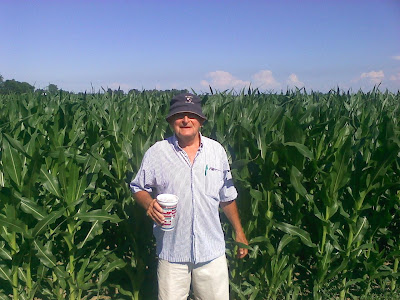Nora will use this blog to tell stories of her childhood on the farm and her urban adventures in preparation for the Farm to Fair project.
Dad - July 4, 2011. Boone County.
I'm not sure how the "knee high by the fourth of July" idiom started, but as a kid I loved showing off our corn fields to our urban friends that celebrated Independence Day on our farm.
I can't remember a time when the corn was not taller than not only my knobby knees, but the knees of the adults. I remember feeling quite smug that our corn was so tall - that clearly we had done something above and beyond to make it so. As an adult, I know that sunshine and rain and hard work and the bank were responsible for how tall it was.
As any farmer can tell you, a good deal of growing crops is in the preparation - being ready to plant when the time is right - equipment ready to roll, the right mix of seed corn and fertilizer and labor. And weather. It's always about the weather.
While we kiddos had plenty of chores and responsibilities around the farm, our involvement in planting was typically minimal. I remember stacking the precious bags of seed and driving them to the waiting planter. In retrospect I'm glad that I didn't have the chance to goof up sowing seeds.
Planting season is where the farm fiscal year starts. All of the cash literally goes in to the ground in seed costs, fertilizer and equipment. There is a small window to get the seeds in the ground and start praying for rain - not too much rain, of course. My farm friends and family visibly relax when the planting is done.
As you can see from the photo this field has not tasseled yet, which is the real July 4th goal - but that doesn't quite roll off the tongue, does it? This Spring was particularly wet (the rainiest April since 1895), and planting was late. Only 30% of the corn crop was planted by mid-May.
The director of agronomic research for Weatherbill Insurance Co., Jeff Hamlin, estimates Indiana could see yield losses this year of between 137 million and 203 million bushels of corn. He tells The Indianapolis Star that would amount to a financial loss for farmers of between $960 million and $1.42 billion.


